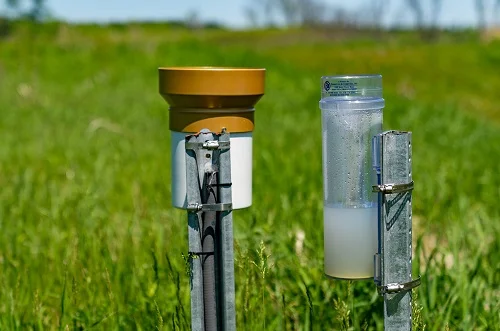A rain gauge is a meteorological instrument used to measure the amount of rainfall at a particular location over a given period of time. It operates on a relatively simple principle. Here’s how a typical rain gauge works:
- Collection Area: The rain gauge use has a wide, open top that acts as a collection area. When it rains, water droplets fall into the gauge and collect in this area.
- Funnel: Attached to the collection area is a funnel-shaped tube. The purpose of the funnel is to channel the rainwater into a narrower space, which allows for more accurate measurements.
- Measuring Cylinder: At the bottom of the funnel, there is a measuring cylinder or a container. This is where the rainwater is collected and measured. The cylinder is marked with measurements, usually in millimeters or inches, which indicate the amount of rainfall.
- Calibration: Before using the rain gauge, it is important to calibrate it. This involves measuring a known amount of water and marking the corresponding level on the measuring cylinder. Calibration ensures accurate readings.
- Readings: After a rain event, the rain gauge is checked, and the water level in the measuring cylinder is observed. The difference in the water level from the previous measurement (if any) indicates the amount of rainfall during that period.
- Recording: The rainfall data is typically recorded manually by reading and noting the water level in the measuring cylinder. This information can be used to analyze precipitation patterns and calculate average rainfall over time.
It’s worth noting that there are various types of rain gauges, including traditional manual gauges, electronic gauges, and automated weather stations that use sophisticated sensors to measure rainfall. However, the basic principle of collecting and measuring rainfall remains the same for all types.










